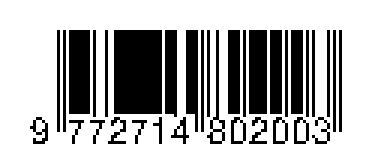PEMBUATAN SERBUK PEWARNA ALAMI TEKSTIL DARI EKSTRAK DAUN JATI (TECTONA GRANDIS LINN. F.)
DOI:
https://doi.org/10.34151/technoscientia.v12i1.1810Keywords:
Anthocyanin, Natural dyes, Teak leavesAbstract
Anthocyanin is a dye that plays a role in providing a brownish red color that has the potential to become a natural dye for food and can be used as an alternative substitute for coloring dyes that are safer for health. Textile dyes are divided into two, namely natural dyes and synthesis dyes. Natural dyes come from animals and plants while synthetic dyes can be produced from chemicals Anthocyanins are widely found in plants with striking colors, one of which is teak leaves. Teak leaves are one part of the teak tree which can be used as a source of natural dyes for textiles by extracting the leaves. This research was conducted to obtain color powder from extracts of dyes from fresh teak leaves using the foam-mat drying method. This study was prepared to study the effect of citric acid addition on color intensity and the addition of chicken egg white to moisture content and solubility of color powder of teak leaf extract. To achieve this goal, in this study used fresh teak leaves with 95% ethanol solvent mass. At the beginning of the process, 25 grams of teak leaves are mashed first, then put into a beaker glass and macerated using a 95% ethanol mass of 250 ml and added 10 ml of citric acid from the amount of solvent with a concentration varied for 24 hours. After that filtered, the filter was taken. Powder making was carried out by foam-mat drying method using chicken egg white as foaming and maltodextrin as filler. The filtrate was added with 8% b/v maltodextrin and chicken egg white with the concentration varied stirred in the mixer until homogeneous. Then the oven is dried at a temperature of 60oC until a constant weight is reached. Using 25 grams of fresh teak leaves, 95% ethanol solvent as much as 250 ml, and 8% b/v maltodextrin obtained optimal conditions at 5% b/v egg white concentration and 30% b/v citric acid concentration, with these conditions obtained the powder results with a moisture content of 8% mass, solubility of 99.22% b/v with a reddish level of 16,625, a brightness level of 43,495, and a yellowish level of 5,925. It is hoped that this research can be used as a reference for the development of further research on anthocyanin dye powder which will then be developed as a raw material for dyes for the chemical industry, and textile industry.
References
Citramukti, I., 2008, Ekstraksi dan Uji Kualitas Pigmen Antosianin pada Kulit Buah Naga Merah (Hylocerecis Costaricensis) (Kajian Masa Simpan Buah Naga dan Penggunaan Jenis Pelarut). Skripsi, Fakultas Teknologi Hasil Pertanian, Universitas Muhammadiyah Malang.
DepKes RI, 2000, Parameter Standar Umum Ekstrak Tumbuhan, Direktorat Jendral POM-DepKes RI, Jakarta.
Effendi, R., 2006, Pengaruh Konsentrasi Putih Telur Terhadap Kualitas Fisik dan Kimia Susu Bubuk Metode Foam Mat Drying. Tesis. Fakultas Peternakan Universitas Muhamadiyah Malang.
Fatmawati, 2007, Ekstraksi Pigmen Antosianin dari Buah Murbei (Morus Alba L) Kajian Konsentrasi HCL dan Uji Stabilitas pada Produk Minuman Yoghurt. Skripsi, Jurusan Teknologi Pengolahan Pangan, Fakultas Pertanian Peternakan, Universitas Muhammadiyah Malang.
Fitrihana, N., 2007, Teknik Eksplorasi Zat Pewarna Alam dari Tanaman Di Sekitar Kita untuk Pencelupan Bahan Tekstil, www.batikindonesia.com.
Guenter, E., 1987, Minyak Atsiri, jilid 1. Jakarta: UI Press.
Kamsiati, E., 2006, Pembuatan Bubuk Sari Buah Tomat (Licopersicon esculentum Mill) dengan Metode Foam-Mat Drying. Jurnal Teknologi Pertanian. 7(2):113-119.
Karim, A. A dan Wai, C. C., 1997, Foam Mat Drying Starfruit (Averrhoa Carambola L.) Purre. Stability and Air Drying Characteristic. Journal Food Chemistry, 64: 337-343.
Moerdoko, W., 1975, Evaluasi Tekstil Bagian Kimia, Institut Teknologi Tekstil, Bandung.
Riawan, S., 1990, Kimia Organik. Jakarta: Binarupa Aksara.
Setyaningrum, E. N., 2010, Efektivitas Penggunaan Jenis Asam dalam Proses Ekstraksi Pigmen Antosianin Kulit Manggis (Garcinia mangostana L.) dengan Penambahan Aseton 60%. Perpustakaan Fakultas Pertanian, Universitas Sebelas Maret Surakarta.
Suhardi,1999, Analisa Pigmen Tanaman dan Bahan Tambahan Makanan, AHP, THP, Fakultas Teknologi Pertanian, Universitas Gajah Mada Yogyakarta.







